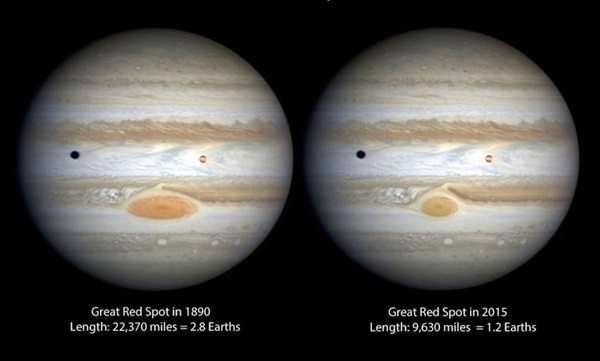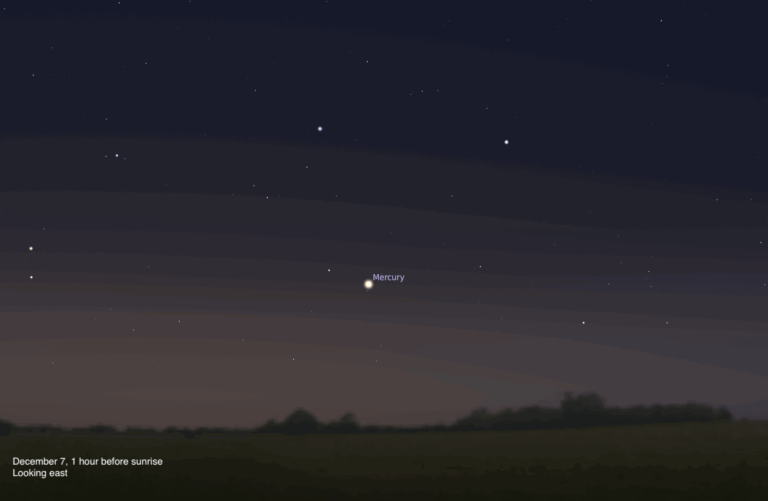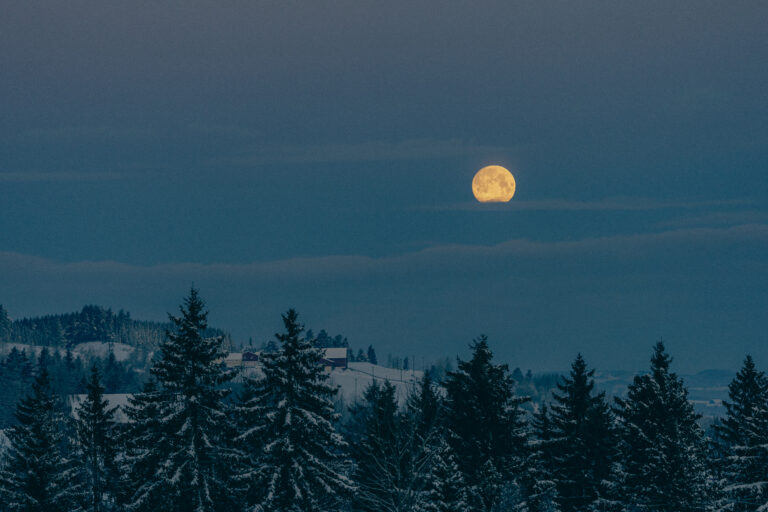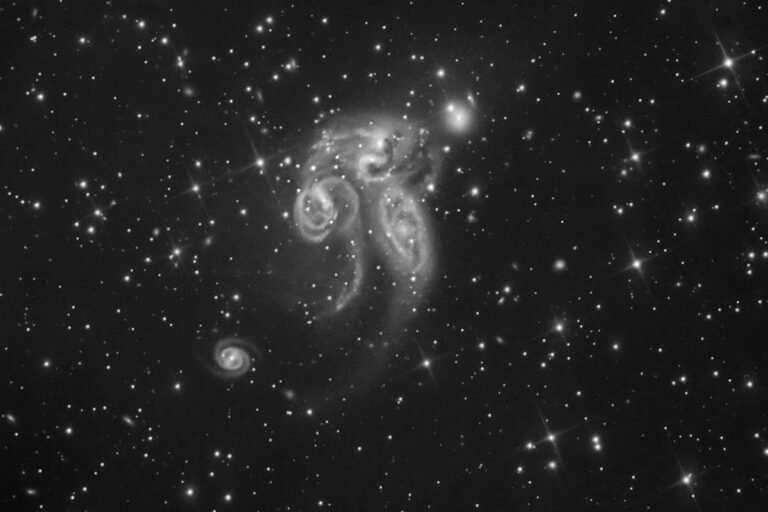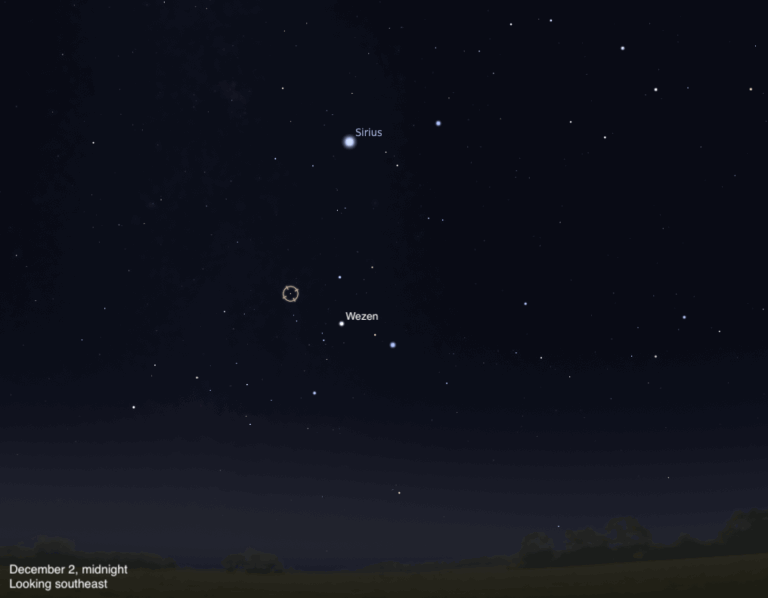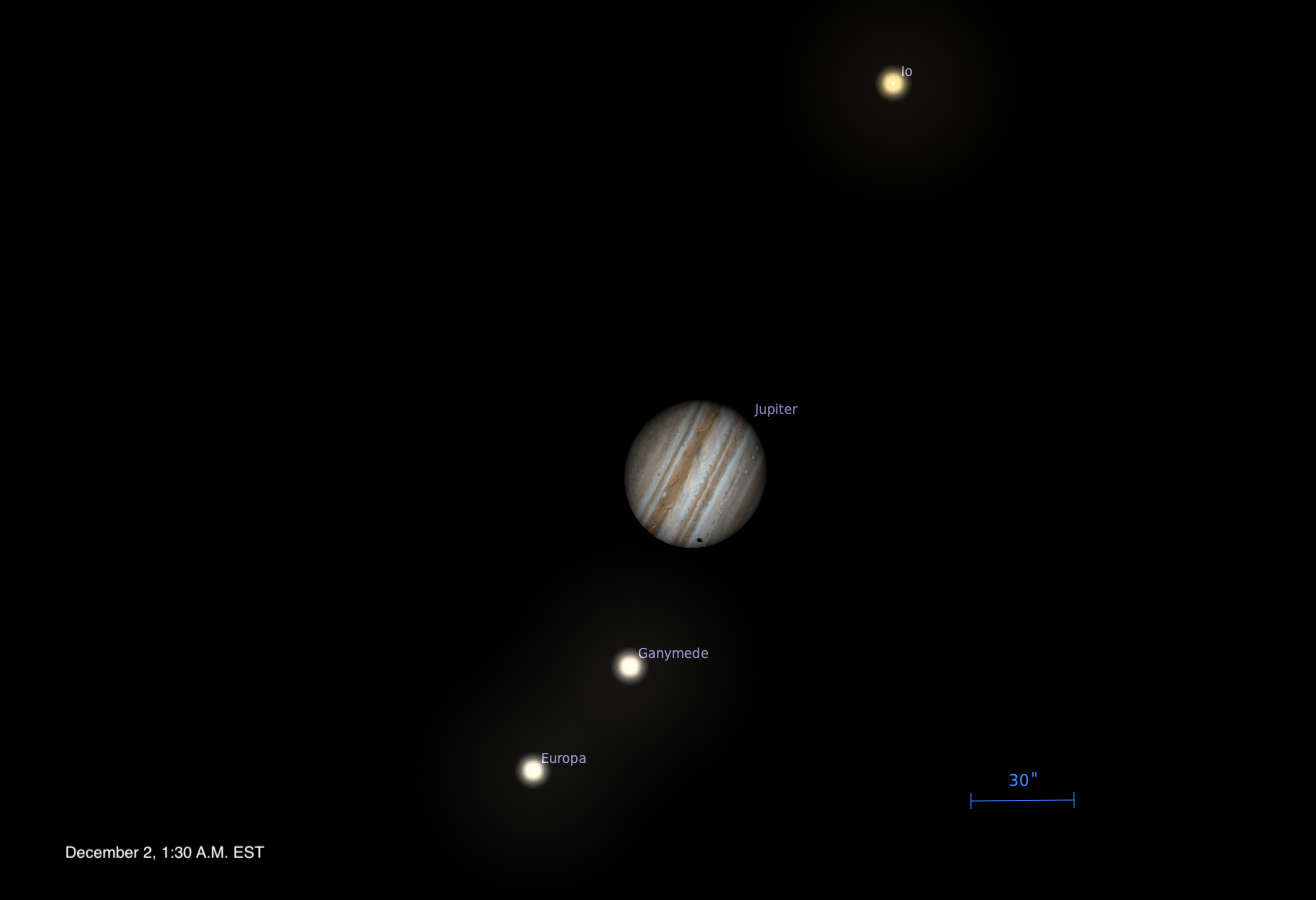Key Takeaways:
Look high in the northwest after darkness falls this week and you’ll be greeted by the familiar sight of the Big Dipper. The Dipper is the sky’s most conspicuous asterism — a recognizable pattern of stars that doesn’t form a complete constellation shape. It makes up the body and tail of Ursa Major the Great Bear. Use the Pointers, the two stars at the end of the Dipper’s bowl, to find Polaris, which lies due north for everyone north of the equator. Polaris marks the end of the Little Dipper’s handle. On evenings in late May and June, the relatively faint stars of this dipper arc directly above Polaris.
Saturday, May 26
Neptune rises around 2:30 a.m. local daylight time and appears 15° high in the east-southeast as twilight commences. The distant world glows at magnitude 7.9, so you’ll need binoculars or a telescope to spot it. Fortunately, it lies near a brighter star that will guide you. This morning, Neptune stands 1.1° west-southwest of 4th-magnitude Phi (φ) Aquarii. You can confirm your sighting of Neptune through a telescope, which reveals the planet’s 2.3″-diameter disk and blue-gray color.
Sunday, May 27
The waxing gibbous Moon appears near brilliant Jupiter all night. The two were closest during the afternoon hours from North America (when they were below the horizon), and they slowly pull apart as the night progresses. Still, they make a pretty pair set against the backdrop of Libra the Scales. If it weren’t for the Moon, Jupiter would dominate the late evening sky. The giant planet reached opposition and peak visibility earlier this month, and it remains a stunning sight from shortly after sunset until morning twilight is underway. It appears in the southeastern sky during evening twilight and climbs highest in the south around 11:30 p.m. local daylight time. Shining at magnitude –2.5, Jupiter is the night sky’s brightest point of light once Venus sets shortly before 11 p.m. The giant world resides in Libra, 1.1° northeast of Zubenelgenubi (Alpha [α] Librae). When viewed through a telescope, the gas giant’s disk spans 44″ and shows stunning detail in its cloud tops.
Monday, May 28
Mars rises around 12:30 a.m. local daylight time and climbs 25° high in the south-southeast by the time twilight commences. Although it won’t reach opposition for another two months, the Red Planet appears noticeably brighter than it did just a week ago. Shining at magnitude –1.1 this morning, it is the second-brightest point of light in the morning sky after Jupiter. If you point a telescope toward Mars this morning, you’ll see a 15″-diameter disk with several subtle surface features. To learn more about the planet’s great summer show, see “Observe Mars at its best” in the May Astronomy.
Tuesday, May 29
Full Moon occurs at 10:20 a.m. EDT, but our satellite looks completely illuminated all night. You can find it rising in the east near sunset and peaking in the south around 1:30 a.m. local daylight time. The Moon spends the night among the background stars of southern Ophiuchus.
Wednesday, May 30
If you look at Jupiter through a telescope tonight, it will appear as if it has a “black eye.” The reason: The shadow of its moon Io appears in stark contrast to the bright jovian cloud tops. The action gets underway at 10:37 p.m. EDT, when Io itself first touches the planet’s eastern limb. The volcanic moon’s shadow follows 30 minutes later. You can track the pair crossing Jupiter for the next two hours. Io moves off the planet’s western limb at 12:45 a.m., followed by its shadow at 1:17 a.m.
The Moon’s trek across the evening sky brings it near Saturn tonight. Look for the planet about 2° to the right of our 94-percent-lit satellite. Saturn won’t reach its peak until opposition in late June, but it appears nearly as nice now (though better on nights when the Moon is not so close). The planet shines at magnitude 0.2 among the background stars of northern Sagittarius, a region that remains on display from late evening until dawn. When viewed through a telescope, the planet’s dramatic ring system spans 41″ and tilts 26° to our line of sight.
Friday, June 1
Brilliant Venus dominates the western sky after sunset. The dazzling object shines at magnitude –3.9 among the background stars of central Gemini, some 9° below that constellation’s brightest star, 1st-magnitude Pollux. Venus appears 16° high an hour after sunset this week, its peak altitude for this evening apparition. Strangely enough, the planet won’t reach greatest elongation from the Sun until August. It appears higher from mid-northern latitudes now because the ecliptic — the apparent path of the Sun and planets across our sky — makes a steeper angle to the western horizon after sunset in late spring. When viewed through a telescope, Venus reveals a disk that spans 13″ and appears 80 percent lit.
Saturday, June 2
With the Moon now exiting the early evening sky, it’s a good time to target one of the spring sky’s finest deep-sky objects. The Beehive star cluster (M44) in the constellation Cancer the Crab lies in the western sky after darkness falls. The 3rd-magnitude cluster appears approximately 40 percent of the way from 1st-magnitude Pollux in Gemini to the similarly bright star Regulus in Leo. With naked eyes under a dark sky, you should be able to spot the Beehive as a faint cloud. But this star group explodes into dozens of stars through binoculars or a small telescope at low power.
The Moon reaches apogee, the farthest point in its orbit around Earth, at 12:35 p.m. EDT. It then lies 251,852 miles (405,317 kilometers) from Earth’s center.
Sunday, June 3
The waning gibbous Moon appears near Mars in this morning’s sky. The two become conspicuous in the southeast by 1 a.m. local daylight time and remain a striking pair until well after twilight commences. Throughout this period, the Moon stands about 3° above its partner.
Dwarf planet 1 Ceres is the largest object in the asteroid belt, which lies between the orbits of Mars and Jupiter. It currently resides in western Leo, which appears high in the west after twilight fades to darkness. The magnitude 8.7 dwarf planet is easy to spot through binoculars or a telescope, particularly this evening when it slides less than 1′ south of magnitude 3.0 Epsilon (ε) Leonis. Point your scope at Epsilon, and Ceres will be the brightest object in its immediate vicinity.


